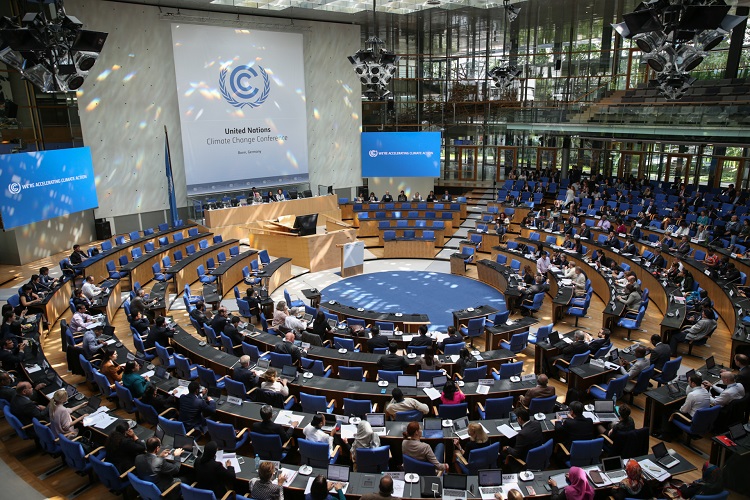(@Unsplash)
Part 2
However, beyond the particular negotiation dynamics in Glasgow, there are other factors contributing to the confusion. To break it down, we need to look more closely at (1) the scope of REDD+ and (2) several specific text references in the final Article 6.2 and 6.4 decisions.
The full scope of REDD+ activities, as defined in the context of the UNFCCC is “reducing emissions from deforestation and forest degradation, plus conservation, enhancement of forest carbon stocks and sustainable management of forests”. Given that the definition of ITMOs includes both emission reductions and removals with no explicit inclusion or exclusion of specific sectors, and the specification that mitigation outcomes are generated from 2021 onwards, reducing emissions from deforestation and forest degradation as well as removals, or enhancement are REDD+ activities can become ITMOs. On this basis, we expect that high-quality jurisdictional-scale REDD+ programs that meet all of the other Article 6.2 requirements can be used by Parties to achieve their NDCs and other international mitigation purposes.
In the case of the 6.4 mechanism, there is critical forthcoming work, particularly the Supervisory Body’s review of eligible activities and methodologies, including those from the Clean Development Mechanism (CDM) as well as those related to “other market-based mechanisms,” which could include methodologies from private carbon standards used in the voluntary carbon markets (VCM). So, again, just as in Article 6.2, there has been no outright inclusion or exclusion of REDD+, but Article 6.4 differs because the Supervisory Body will actually decide what is, and is not, eligible.
There is, however, further consideration to be given to “emissions avoidance” for both Article 6.2 and 6.4, as well as to “conservation enhancement” for Article 6.4 specifically. We interpret these terms as potentially applicable only to specific REDD+ activities within the broader scope described above. There is no exact definition of “emissions avoidance” and an interpretation that automatically equates it to avoided deforestation does not have a strong basis. The use of “conservation enhancement” versus enhancement or removals more generally, points to a focus on ongoing removals in conserved forests, for which there have been specific questions raised, in terms of how to ensure additionality, i.e., going beyond what would have happened anyway.
Another key area that is also generating a lot of discussion is the impact of Article 6 decisions on VCM. Initiatives such as the Voluntary Carbon Market Integrity Initiative (VCMI) are working with technical experts and countries, to provide guidelines for claims that are made by private companies that buy voluntary carbon credits, to ensure its high integrity. These units, which do not have authorization from the national government to be discounted from their national accounting for the NDC, are certified and issued by international private standards and bought by various companies to meet their own voluntary targets as part of their corporate responsibilities. VCM will continue to be an important means for channeling private climate finance to NDC implementation moving forward. The total volume of VCM transactions as of August 31, 2021, had already exceeded $748 million. 2021 is likely to deliver the highest annual value ever tracked in the VCM, potentially exceeding $1 billion. Already a leading category in terms of volumes transacted, Forestry and Land Use posted a near-record volume in 2020 at 47 MtCO2e (the previous high was 50.7 MtCO2e in 2018) and set a new high price mark at $5.59/ton in 2020 (average prices were $3.40 in 2018 and $4.33 in 2019). While it is too early to tell what the long-term impact will be, there has already been an evident impact on price in the weeks following COP26. VCM transactions will continue to exist outside the UNFCCC and it is critical to ensure these will be carried out with high integrity.
In the coming months, experts will continue to analyze and clarify the COP26 decisions and what they mean - particularly those on Article 6 - but one thing is already clear – we need to accelerate action and ambition. There is no time to lose. Many countries (85% of total) have already indicated their intent to use international carbon markets to achieve their updated or new NDCs. UNDP’s Climate Promise has been working since 2020 with more than 100 countries to support enhanced ambition and accelerate implementation of NDCs and is well positioned to continue to accompany countries in this process, and the UN-REDD Programme is committed to supporting countries in enhancing the ambition and implementation of forest-related NDC components through 2025, building stronger linkages between NDCs and REDD+ for the forest sector.
Now that the Paris Rulebook has been finalized, we can move forward together with renewed momentum to ensure the Article 6 will achieve its objectives on higher ambition, environmental integrity and sustainable development.
For more information: read here.
Authors
Kimberly Todd
Global Technical Advisor, Climate & Forests, UNDP
Leticia Guimaraes
Senior Global Technical Advisor, Climate & Forests, UNDP

